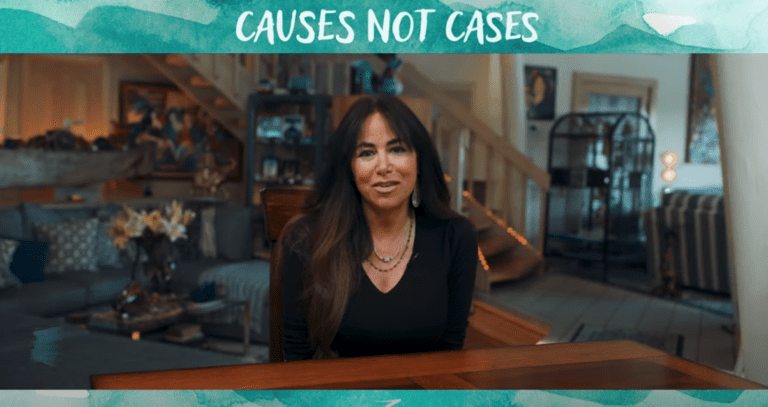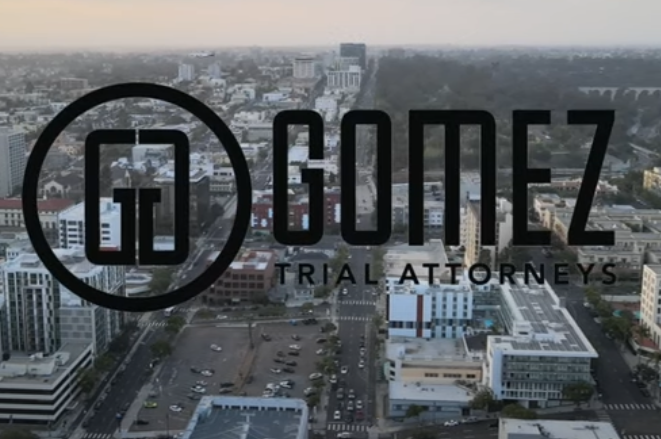Prepare For an Emergency or Natural Disaster
While no one wants to think about the worst-case scenario, you should think ahead to be prepared for a natural disaster or emergency. While California is a state filled with beauty, it is also susceptible to natural disasters like floods, earthquakes, and wildfires.
- The United States Geological Survey, a division of the U.S. Department of Interior, predicts at least a 60 percent chance of an earthquake measuring 6.7 in the next thirty years in both Los Angeles and San Francisco Bay Area.
- Millions of Californians live in locations that put them at risk of flooding from streams, rivers, lakes, and coastlines. In the last 70 years, every California county has had at least ten flood disasters declared. Some counties have had almost 30 flood disasters declared.
- Wildfires are increasingly in the news as they have ravaged California in the last several years. The Insurance Information Institute rates California as the number one state for extreme wildfire risk with 29 percent of properties at risk from wildfire damage. In 2018, California saw 8,054 wildfires which burned over 1.8 million acres.
- The above statistics are certainly sobering and point to an important need to ready your property against these natural disasters. You can use the MyHazard tool from the Governor’s Office of Emergency Services to learn more about specific hazards at your property. Read on for tips and actions you can take today to prepare your home for an emergency.
Planning for Wildfires
While we all may want to seem as heroic as Sam Elliott, there are better ways to prepare for a wildfire than to douse it with water as it blazes past.
Consider Building Materials
If you are building a new home or making updates to your home, prioritize the use of fire-resistant materials. If a house is built with flame or fire resistant materials, this can significantly slow down the ability of fire to enter the home.
Roofs are common culprits for spreading wildfires as the surface and crevices of the roof allow firebrands to settle and ignite. One important way to reduce the wildfire risk for your home is to ensure your rook is made of Class A roofing materials (the most fire resistant), does not use wood roofing shingles, and avoids chemically treated materials or coatings.
While windows are not the first portion of the home to come to mind when discussing wildfires, they can be an important point of prevention. The glass in windows can fracture or fall out due to the heat of a wildfire, allowing fire to more easily spread throughout the house. Consider using double-paned windows and tempered glass.
Understand the Home Ignition Zone
Developed by a fire scientist, the Home Ignition Zone delineates three zones and how they should be managed to optimize protection to your home.
- Immediate zone. This is the home itself and anything within five feet of the home. To protect the immediate zone, be sure you clean roofs and gutters and other debris, install metal mesh screening on eaves, and move flammable material away from wall exteriors.
- Intermediate zone. This is the area 5-30 feet from the home. Preparation of this zone focuses on landscaping, including keeping the lawn below four inches, breaking up possible fire pathways with cement structures like driveways and patios, and pruning trees.
- Extended zone: This zone can span from 30-200 feet and the focus is to interrupt the path of fire and to reduce the size of flames. Preventative actions include removing dead plants and trees, removing vegetation adjacent to structures like sheds, and maintaining an appropriate distance between trees.
Finally, make sure the outside of the home stays free of leaves, debris, and other flammable materials. This will limit the ability of a fire to catch fire and spread close to your home.
Opt-In to Emergency Alerts
Make sure you are signed up for any local and federal emergency alert systems. Every county in California offers an alert program that will issue alerts if an emergency exists in the county. Air quality alerts are also important indicators of wildfire risks. Also make sure you are familiar with the Federal Communications Commission’s federal Emergency Alert System.
Put a Plan in Place
Similar to the recommendations for earthquakes and floods, make sure you have a plan in place with your family. This includes ensuring you have an emergency kit prepared, that you have plans for your pets, and that you have researched and discussed possible evacuation routes.
Unlike earthquakes and flooding, you will also want to ensure your emergency kit includes N95 respirator masks for each family member. These masks filter out particles in the air. Additionally, give special consideration to any family members that have breathing conditions such as asthma. Make sure you have emergency medicine available.
Designate a Safe Room
If you cannot evacuate or if you are simply trying to evade smoke, designate a room that will be kept off limits from outside air as much as possible. All doors and windows should remain closed. Invest in a high-quality, portable air cleaner that can help keep the air in the room clean.
Following the above steps will put you and your home in the best position for surviving a wildfire.
Hopefully the above resources and strategies will help you reduce any stress and increase your preparedness for natural disasters in the California area. One final step to consider is to ensure any important paperwork is in order. An experienced attorney can help you prepare, review, and store any paperwork that would be necessary before, during, or after an emergency.
Earthquake Preparation
You can make sure your home is as prepared as possible for an earthquake.
Ensure Structural Stability
It is important to ensure your home doesn’t suffer from any structural weaknesses that may make it more susceptible to damage or collapse during an earthquake. Consider enlisting a professional to help you assess the stability of your home, including proper anchoring of the house to its foundation, strengthening crawl space walls, bracing pier-and-post foundations, and reinforcing masonry walls and foundations. The extent of structural work required will likely depend on when your house was constructed and whether it has suffered any structural damage in the past.
Secure Items Inside the Home
While your mind may first jump to the idea of your house collapsing, it is much more common for items within the house to fall during an earthquake. Not only could these falling structures cause property damage, they are also likely to cause injury to the inhabitants of the house.
Survey your home for any furniture or other structures that could move, shift, break, or fall during an earthquake. Once you have detailed all potential risks, prioritize securing these items to the wall. Tall or heavy items such as bookcases and appliances should be at the top of your priority list. This helpful resource from the Federal Emergency Management Agency (FEMA) can help you locate areas of risk in your home.
Understand Insurance Options
Many homeowners are surprised to find that their homeowner’s insurance policy does not include earthquake insurance. Instead, earthquake insurance is offered as an add-on to many standard insurance policies. Take some time to understand what earthquake insurance, including:
- What it covers (normally repairs, personal belongings, and additional living expenses);
- What is not covered (often damage from additional natural disasters caused by the earthquake such as floods and fires); and
- What the average deductible is given that they are generally quite high.
This will help you determine whether the additional insurance investment is worth it.
Have a Plan
Work with your family to ensure you have a plan in place in case an earthquake does happen.
- Be familiar with the best areas for protection during an earthquake, including the safest places to drop, cover, and hold.
- Keep an emergency supply kit in your home that includes a first aid kit, tools, and supplies like a flashlight and batteries, comfort items like a change of clothes and blankets, and enough food and water to last three days. Make sure everyone in your house knows where the kit is located.
- If you have a pet, make sure you are familiar with shelter options for animals and also have items on hand in your disaster kit that a pet may need.
- Make sure capable family members know how to turn off the gas, electricity, and water in your home. Your local utility providers can assist if you don’t know how to accomplish these tasks.
- Prepare a document that details emergency contact information and evacuation sites for all common places visited by family members, including school and work. Determine an out of state contact that all family members can contact in case local phone lines are busy or unavailable.
- Consider taking a first aid course so you are prepared to assist your family as needed.
While none of the above can prevent an earthquake from happening, taking the above steps will give you peace of mind that you have done everything possible to prepare your home and family to stay safe.
Flood Readiness
Living near a source of water can be a major benefit for many homeowners, but it also increases the risk of a flood. Read on to understand your flood risk and what you can do to prepare.
Check the Levee Flood Protection Zone
The State of California Department of Water Resources creates and maintains Levee Flood Protection Zone maps. Simply enter your property address or parcel number to learn the flood risk associated with your property. The maps estimate the maximum area that might be flooded if a levee fails. FEMA also offers a public source for flood hazard information.
Even if a risk isn’t associated with your property, this does not mean it is immune to the risk of flooding, as many factors can converge to cause flood conditions.
Develop an Evacuation Plan
When flooding is imminent, residents of the area where flooding is anticipated will likely be called on to evacuate. If you think about evacuation for the first time in the face of an emergency, you are likely unprepared to deal with it. Give it some thought well before a flood confronts you.
- Have an emergency kit ready to take with you if you are required to evacuate, including necessities and comfort items. Don’t try to take so much that it becomes unwieldy and hinders your evacuation.
- Don’t forget about pets. Have a plan for evacuating your pets, including any items they may need.
- Prepare an evacuation route. Having a pre-planned route will help your family stay coordinated.
If emergency officials have recommended evacuation, take this recommendation seriously, as it may save your life.
Prepare Your Property

Floods can cause serious damage to your home, but steps you can help limit the damage. Make sure that drains and gutters remain unclogged, especially if a flood is anticipated. Consider installing check valves or backflow valves to ensure sewage doesn’t back up into the home during a flood. Another protective option is to have a sump pump installed which acts like a drain, sucking water out and away from your house.
If a flood is imminent, consider taking some time to move valuables that you can’t bring with you to higher levels.
Consider National Flood Insurance
The federal government instituted the National Flood Insurance Program in an effort to reduce the impact that flooding has on public and private property. The program offers more affordable insurance to property owners that may be at risk of flooding. The program offers two types of insurance, one that covers the physical structure of the home and one that covers the contents of the home. To explore whether you should pursue flood insurance, you will need to talk to a flood insurance provider in your area.
Flooding is traumatic and stressful, but following the steps above will help minimize the damages to your property and your family.
Gomez Trial Attorneys
655 West Broadway, Suite 1700
San Diego, CA 92101
Phone: (619)-237-3490







